BUILDING PROPERTIES AND USABILITY
DOMESTIC TYPES OF WOOD
Several thousand woody species that differ from each other in botanical, histological and technological characteristics provide unlimited opportunities for scientific research in this area. However, despite this, the lack of funds and the lack of economic interest meant that, from the anatomical and partly technological side, a little over 250 types of wood have been processed so far, of which about 50 types of wood are of greater economic importance. On the botanical side, the number of wood species that have been researched and even systematically processed in great detail is much higher.
In our country, there are about 20 types of wood of industrial importance, of which only a few are more important. The most important local wood species include: beech, oak, spruce, fir, and pine. There are fewer other species, so their economic importance is lower.
For a more detailed introduction to domestic coniferous and deciduous wood species, we will provide an overview of data on the structure, properties, and industrial usability of the most important wood species in our country.
TECHNICAL PROPERTIES OF WOOD
POPLAR (Populus nigra L.)
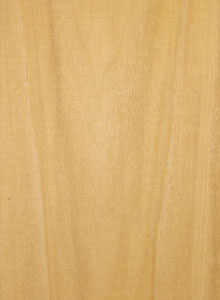
The distribution area of black poplar is in Europe, the former countries of the USSR, Turkey, North Africa, and India.
The poplar tree is about 30 m tall. The crown is sparse, wide, and with many branches. The bark of young trees is smooth and light gray, later cracks longitudinally, and takes on a dark gray color. The thickness of the bark is up to 12 cm, and its share is about 12.6% of the volume of the tree. The density of the bark is about 412 kg/m3. The length of the black poplar trunk is up to 15 m, and the chest diameter is up to about 1 m.
Black poplar belongs to the sailing tree species. The sapwood is white-yellowish and wide. The heartwood is yellow to reddish-brown. Growth rings are barely visible. The tracheas are diffusely and porously distributed. The wooden strips are low, thin, and homogeneous.
ELM (Ulmus carpinifolia Gle.)
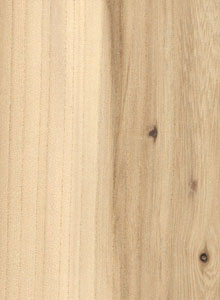
Polish elm is widespread in Central, Southern, and Western Europe, North Africa, and Western Asia. The altitude distribution of elm is from 700 m/asl to about 1300 m/asl in the Swiss Alps.
Elm is a deciduous tree with a trunk height of 20 to 30 m, a trunk length of up to 10 m, and an average trunk diameter of 0.5 to 2 m. The crown of the tree is wide, with many large branches, of which the upper ones are upright, and the lower ones are slightly lowered. The bark of the trunk cracks quite early. On old trees, the bark is dark gray-brown, longitudinally furrowed. The volume share of bark is about 15.6%, and the density is about 400 kg/m3.
Elmwood is fibrous, sapwood yellowish-white to dirty-yellow and narrow. The heartwood is brown-red to dark-brown. Growth rings are striking. Tracheae are ring-shaped. The contrast in color between early and late wood is great. The wood strips are homogeneous and angularly invisible.
WALNUT (Juglans regia L.)
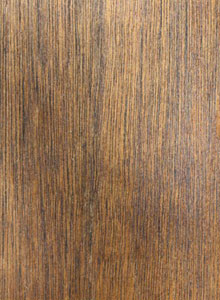
The distribution area of the walnut is central, western, and southern Europe, and it is also cultivated in Asia Minor, North Africa, Northern India, and China. Its altitudinal distribution in Central Europe is up to 850 m/asl, and in southern Italy, it grows even up to 1800 m/asl. Walnut trees can be over 100 years old.
Walnut trees generally reach a height of about 25 m. The length of the trunk is up to 8 m, and the diameter is usually up to 1 m, rarely larger. The crown of the walnut tree is very wide, oval, with many thick branches. The bark of the trunk is smooth, light gray when young, and later cracks longitudinally.
The Walnut is a deciduous type of tree. The sapwood is grey-white and narrow, and the heartwood is dark-brown to black-brown, mostly with dark stripes. Raw wood smells like leather. The growth rings are striking, relatively wide, and concentric, and the tracheas are diffusely-porous and large, visible. The strips of wood are thin and low, homo and heterocellular, and difficult to see. Axial parenchyma is unilateral and zonally diffuse.
BLACK PINE (Pinus nigra Arnos.)
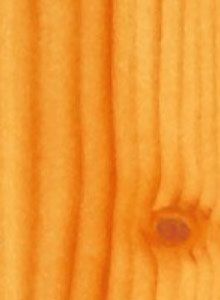
The distribution area of black pine, which has several subspecies and varieties, is located in southern Europe, northern Africa, and Asia Minor.
The pine tree is evergreen and up to 40 m tall. The crown of the tree is wide and oval. Trees grow on poor and rocky terrain when their canopy can be in the shape of an umbrella. The trunk is straight and up to 20 m long, and the chest diameter of the trunk is up to 1.2 m. The bark of the tree is gray-brown to black-gray, rather thick, cracks at an early age and gets deeper longitudinal and shorter transverse cracks.
Pine wood is fibrous, the sapwood is yellowish-white, narrow or wide, and the heartwood starts between 40 and 60 years of age. The pith is reddish-brown, in the fresh state there is no significant difference in the color of the pith and sapwood, but later, due to the decrease in humidity and oxidation, the pith becomes reddish-brown. Growth rings are striking, and the transition from early to latewood is abrupt. Resin canals are numerous but barely visible. The wood strips are barely visible on the radial section, and while they are not visible on the transverse and tangential section, they are thin and heterocellular.
PINE WHITE (Pinus silvestris L.)
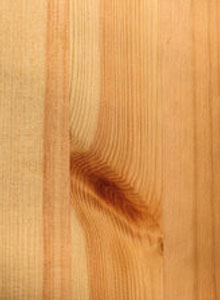
The distribution area of white pine is quite wide and includes the area of Europe and Northern Asia. Its altitudinal distribution is from 700 m/asl in the northern mountains to about 1600 m/asl in the southern mountains.
The pine tree is evergreen, 10 to 30 m tall, with trunk length up to 20 m, and chest diameter up to 1 m. The crown is tall, oval-conical, and lets in a lot of light, that is, it is quite sparse and lighter in color than the black pine crown. The trunk is slender and straight. Branches are arranged in vertebrae. The bark of young trees is thin, reddish-gray, later it is grey-brown in the lower parts, deeply fissured, while the upper parts of the trunk and branches still have a yellowish-red bark, which is of a small consistency and peels off in small flakes. The volume share of bark is from 12 to 18%, and its density is about 300 kg/m3.
FIR, ordinary (Abies alba)
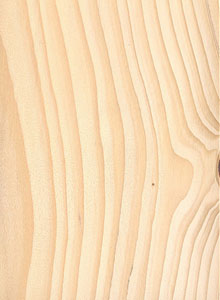
The distribution area of fir is in central, western, and southern Europe. Its altitudinal distribution is about 800 m/asl in the north to about 2000 m/asl in the Pyrenees.
Fir is an evergreen tree, whose trunk height is 30 to 40 m, although specimens of 50 and more meters can be found. The length of the trunk is 20 m, and the chest diameter of the tree is up to 1 m. The crown of the tree is conical when young, and later more cylindrical. The branches are arranged horizontally in the form of vertebrae, and the twigs do not hang. The bark of young trees is smooth, light gray later cracks and darkens. The volume share of bark is about 11.5%, and its density is about 460 kg/m3.
The fir wood is bulging, yellowish-white to reddish-white in color, growth rings are striking, and the transition from early to latewood is gradual and somewhat more abrupt than that of spruce. The wood has no resin canals, the wood strips are thin and invisible. The wood is generally of a regular texture, sometimes it contains charred wood, and twisting of fibers and waviness of the line of growth rings at the point of their intersection with the strips of wood can be encountered.
SPRUCE (Picea abies Karst.)
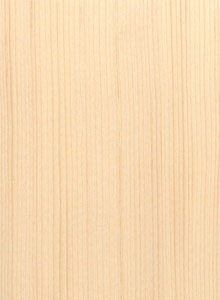
Spruce is distributed in the mountains of central and southern Europe, in the north it extends to Scandinavia, and its southern border is the mountains of the Balkan Peninsula. Its altitude distribution is from 1500 m/asl to about 2000 m/asl.
The spruce tree is evergreen, reaching a height of 30 to 50 m. The length of the trunk is up to 20 m, and the average chest diameter is up to 1.2 m. The canopy is regular and conical. The branches are thin and vertebrally arranged. The twigs on the branches are up to 50 cm long and more. The bark of the tree is thin, in its youth it is smooth and gray for a long time, later it becomes scaly and takes on a gray-reddish color. The volume share of bark is about 12%, and its density is about 340 kg/m3.
ASH (Fraxinus excelsior L.)
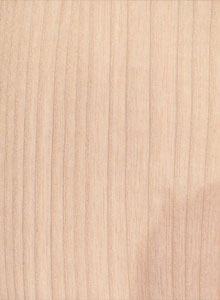
Common ash is distributed throughout Europe and in the northern parts of Asia Minor. Its altitude distribution is from 650 m/asl to about 1400 m/asl in the mountains of the Southern Alps.
The ash tree is 25 to 35 m high, and the length of the trunk is 15-20 m. Trees up to 300 years old reach a chest diameter of up to 1 m. The canopy is oval and rounded. The branches are thick and mostly directed upwards.
Ash has a thin, smooth, and greenish-gray bark when young, which turns yellow-gray in age and becomes shallowly smoothly furrowed. The volume share of bark is about 13.9%, and its density is about 457 kg/m3.
ACACIA (Robinia pseudoacacia L.)
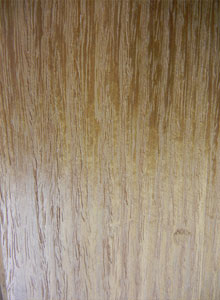
Acacia was brought to Europe at the beginning of the 17th century and now its distribution area is in Europe, North Africa, and New Zealand. The tree reaches a height of up to 25 m, a trunk length of up to 10 m, and a chest diameter of about 0.8 m. The crown is sparse, if the tree is isolated, then it is round, and if it is in a stand, then as a rule it is oblong.
The bark of the acacia tree is smooth and gray when young, later it is thicker and acquires a gray-brown color with longitudinal cracks. The volume share of the bark is up to 10%.
Acacia is a deciduous tree species. The sapwood is very narrow (3 to 6 growth rings). Growth rings are striking. Tracheae are arranged in the form of rings. The contrast in color between dark late and light early wood is great. Tracheae of early wood are usually surrounded by parenchyma and later filled with tissue, visible to the naked eye in transverse and longitudinal sections. Wood bands are thin and low, homocellular, less often heterocellular, and visible on axial sections.
OAK ORNET (Quercus petraea)
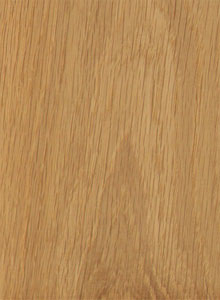
Ornate oak is a tree from the oak family, Fagaceae family. Other popular names for oak kitnjak are brdnjak, gorun, beljik, črepinjak, graden, štilik.
Ornate oak reaches a height of 40 meters and a breast diameter of 1 to 3 m. The bark of the tree is much thinner and more shallowly fissured than that of the oak tree. Buds are brown, bare, and conical-pointed. The leaves are from 8 to 12 centimeters long, inverted ovate lobed, on the lower side less hairy along the midrib. The petiole is 1 to 3 cm long. The fruit is an acorn, shorter and thicker than the acorn of the common oak, uniformly light-yellow in color. It has a less luxurious crown than the oak. Oak acorns grow in groups of 2 to 5.
It does not occur on wet soils, it grows poorly on limestone substrate, and it is acidophilic. Its forests have been largely cleared for agriculture. It is a heliophilic species, resistant to dust and atmospheric pollution. Its wood is of very high quality. It grows in forests up to the age of 120 years. This is his optimal maturity. Physiological maturity is up to 1000 years.
